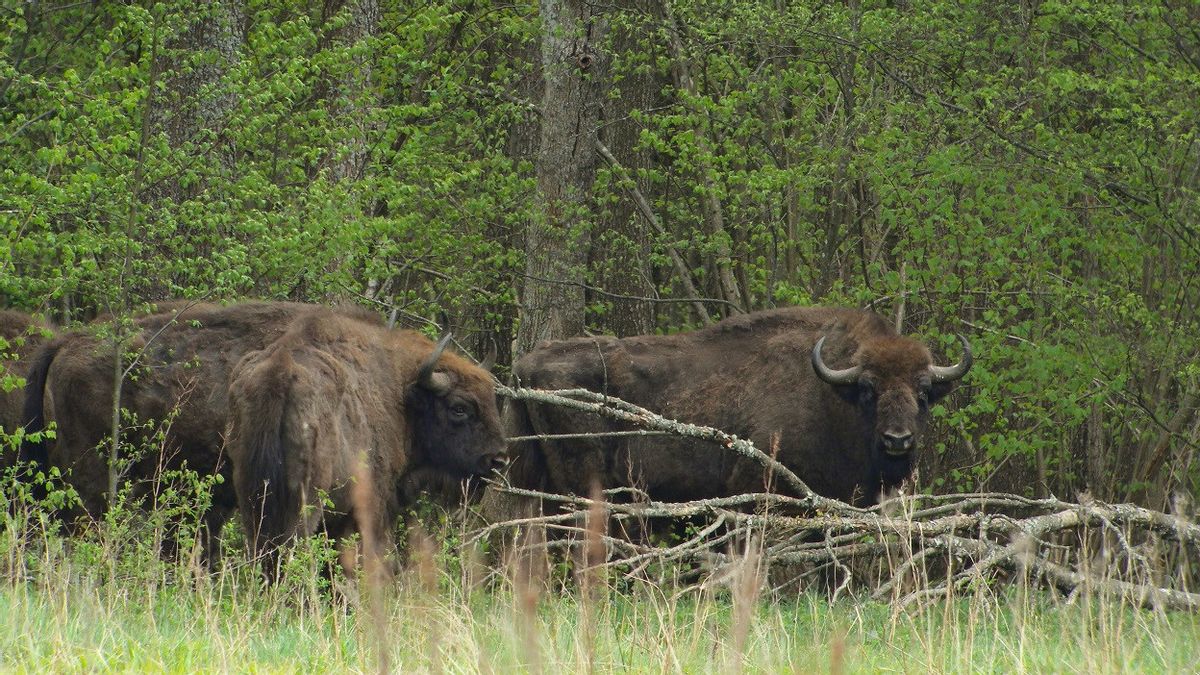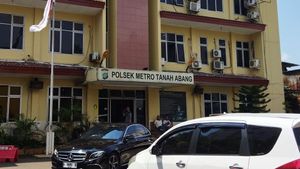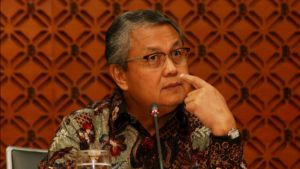JAKARTA - Romania's newest inhabitants of the Carpathian Mountains prefer to shy away from visitors, but the traces of their presence are clearly visible.
A number of natural signs can be found in this area, such as footprints of toenails in the mud to peeling tree bark, which are clear signs.
These are signs of a successful project aimed at reintroducing bison to the region, after a centuries-long absence.
The last wild European bison were killed by hunters in 1927, but their reappearance in Romania is key to keeping the woolly giant off the endangered species list.
"There is an urgent need to once again give bison a chance to live in the wild and to mix bison genes from captivity," said Matei Miculescu, a forest warden responsible for monitoring the Carpathian herd.

In the autumn sun at the edge of an ancient forest, Miculescu is in search of the forest's newest inhabitants.
The animals may be difficult to identify. In recent years, they have been tempted further into the forest by the abundant vegetation and possible expansion of their habitat.
Miculescu said animals breed here, in contrast to captivity which "creates the risk of inbreeding" and weakens their chances of survival.
Romania welcomed bison back into the wild in 2014, more than 200 years after they were last seen here.
"About 105 bison now live freely in the Tarcu Mountains and have settled well," said Marina Druga, head of the project co-led by WWF and Rewilding Europe.
"The goal is to reach a population of 250 individuals within five years."
After the animals first arrived in the country, they spent several weeks acclimating to life in the Romanian wilderness, before being released into the wild and left to fend for themselves.

They currently inhabit a protected area of more than 8,000 hectares. Since 2014, 38 calves have been born in the area.
"Without (the bison cub), the project would have no future," explains Miculescu, who recognizes each creature by its horns.
However, those running the project refused to name the bison cub. Since they were born in the wild, all ties to humans had to be severed, Druga explained.
Today, about 6,000 wild bison can be found throughout Europe. The World Wide Fund for Nature (WWF) said the next step to make Romania's population sustainable would be to introduce bison to other parts of the Carpathian Mountains.
As well as benefiting the bison itself, proponents say, rewilding is a boon to the wider ecosystem, bringing benefits to some 600 species, from microorganisms to large carnivores.
"They are changing landscapes and forest architecture by stopping the spread of invasive tree species, spreading seeds for hundreds of plants and creating pathways that small animals use to access food," Druga said.
Weak or sick members of the herd fall prey to wolves or bears, who are less likely to stray into human settlements in search of food. Even those who watched it closely would be surprised by the effects of the bison's presence.
"Birds collect feather debris to protect their nests, while frogs can use bison hoof prints to jump from one pond to another," Miculescu said.
The English, Chinese, Japanese, Arabic, and French versions are automatically generated by the AI. So there may still be inaccuracies in translating, please always see Indonesian as our main language. (system supported by DigitalSiber.id)













